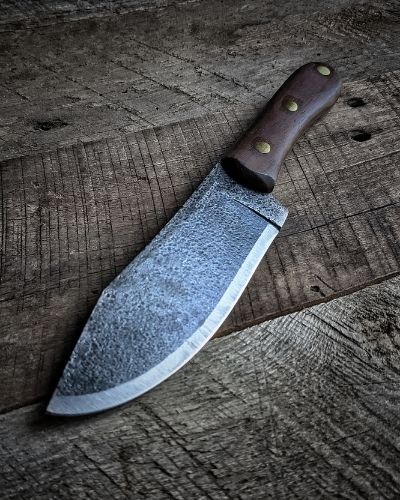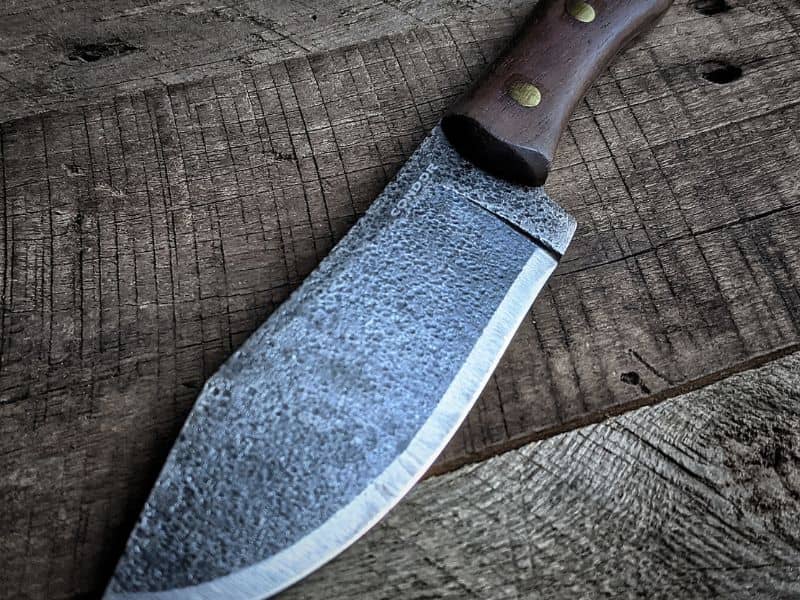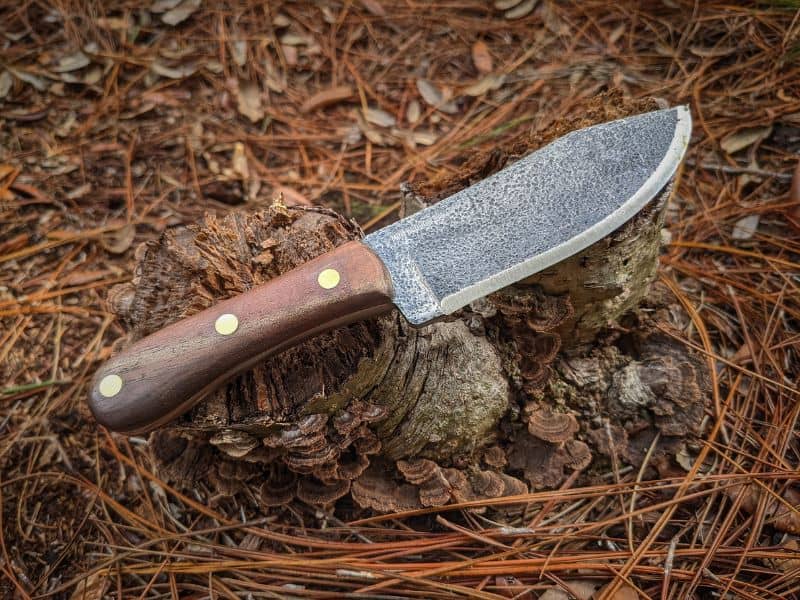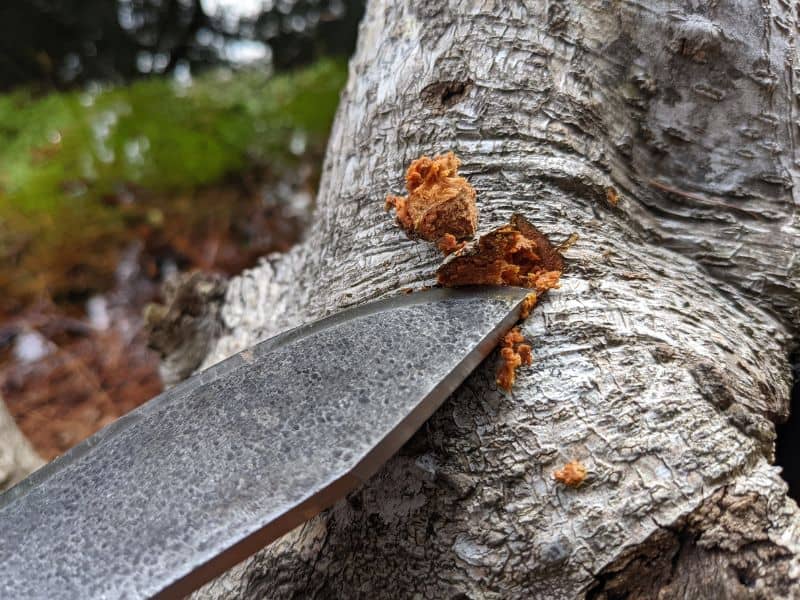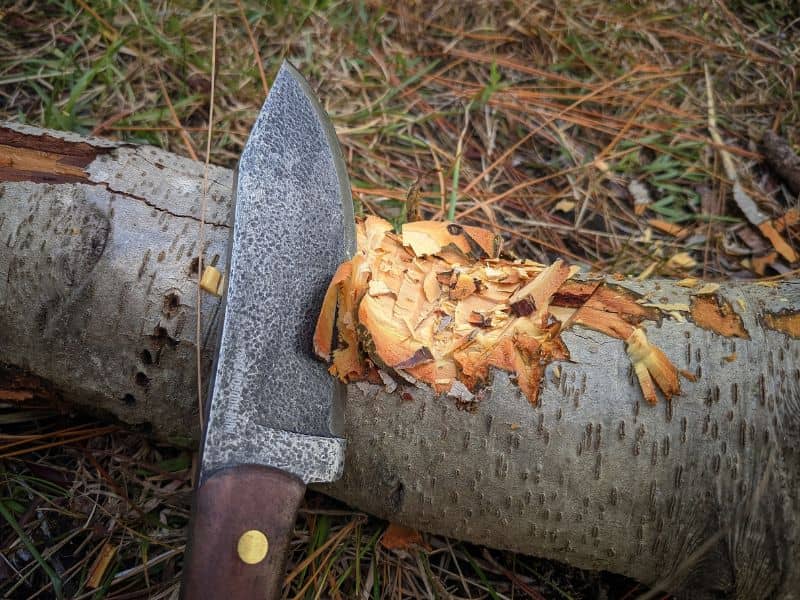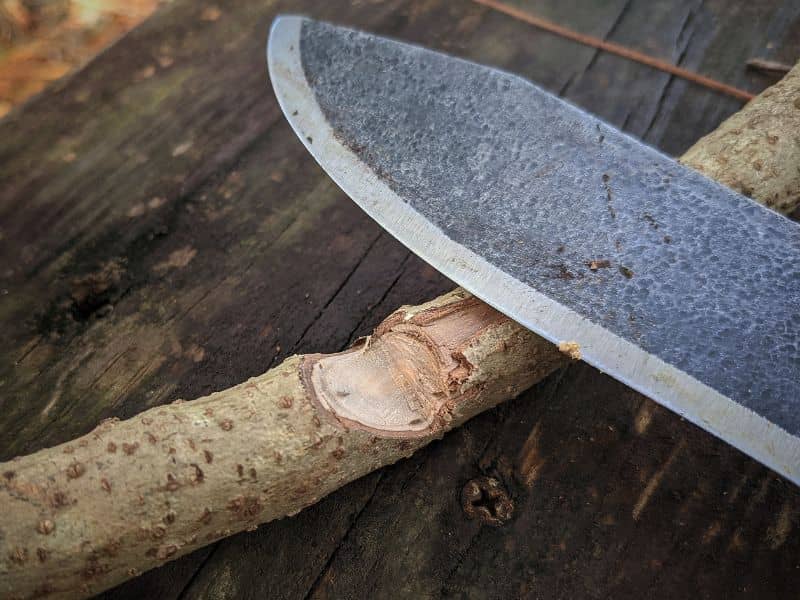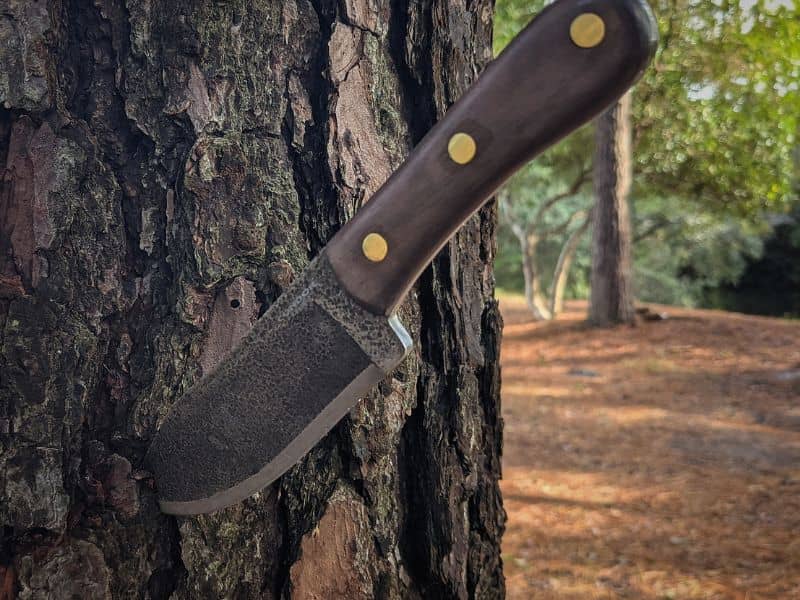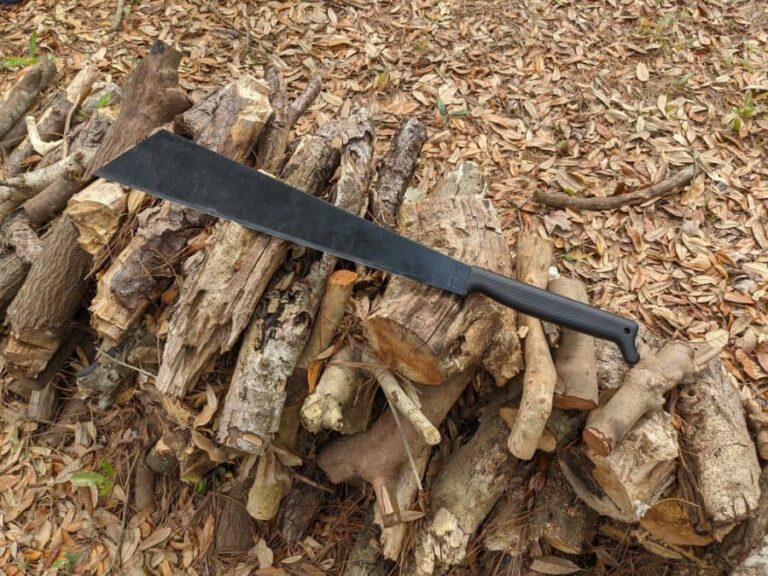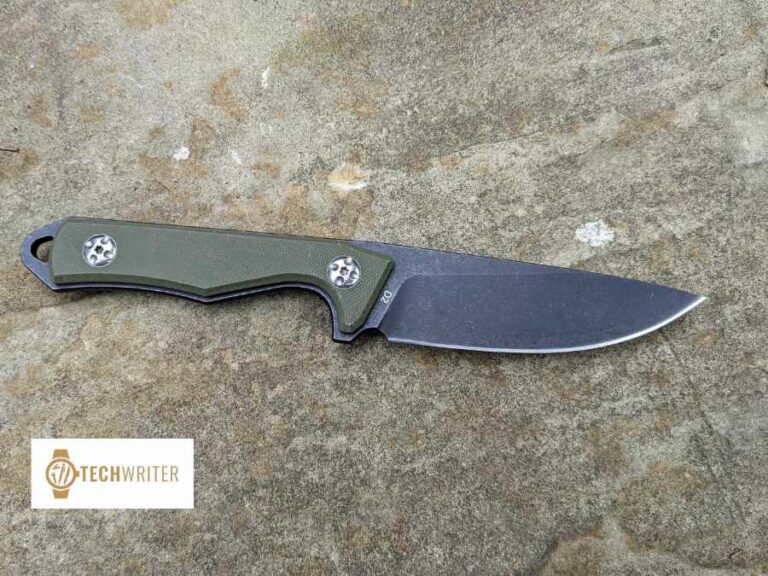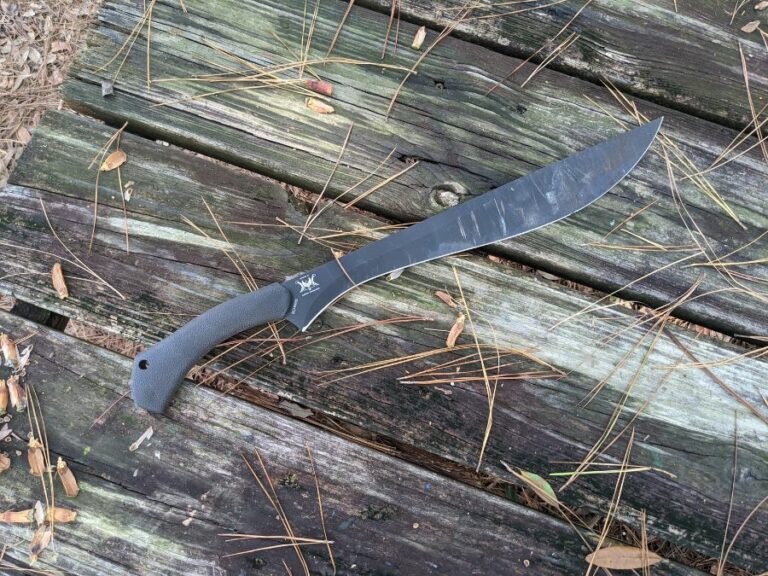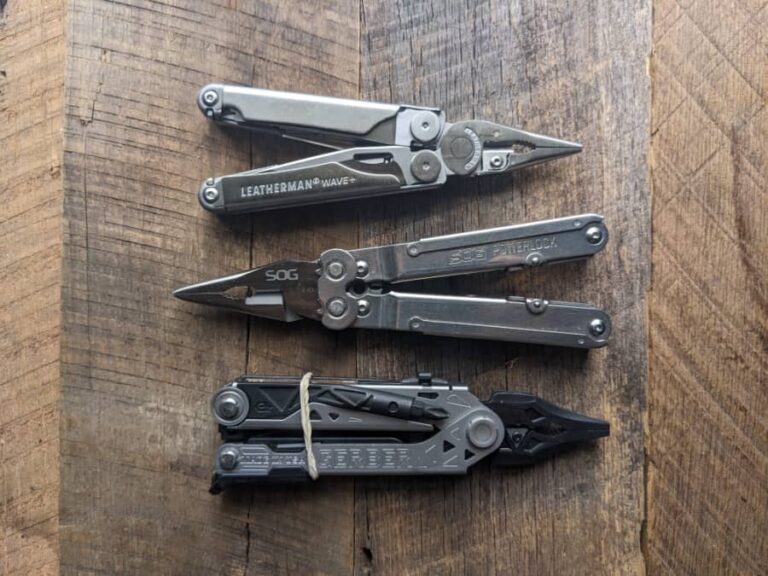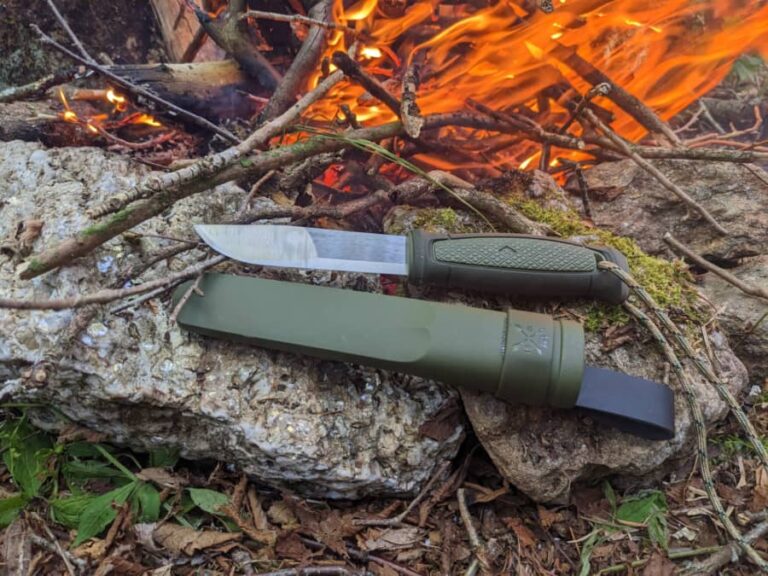Condor Mini Hudson Bay Knife Review
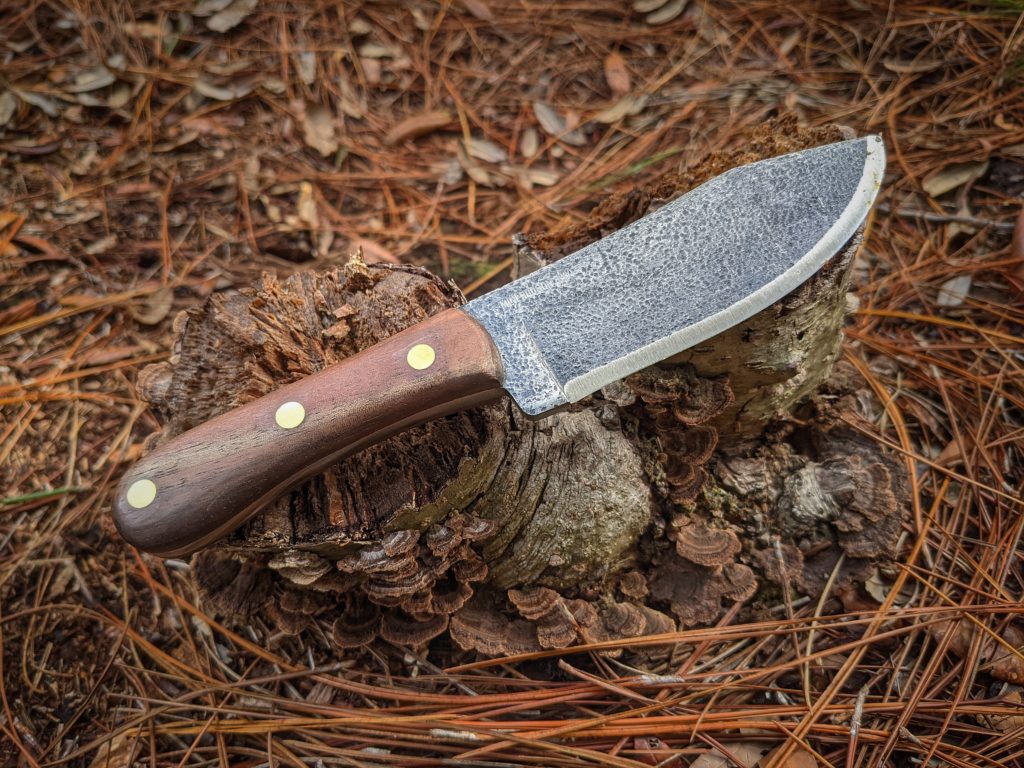
Good things often come in small packages. The Mini Hudson Bay knife from Condor is a good example to back up that axiom, and it’s also proof that words like ‘small’ and ‘mini’ are entirely relative.
The Mini Hudson Bay might look miniature when held up against the original Condor Hudson Bay knife, but by any other measure, it’s plenty big enough to get the job done. This is a knife that genuinely took me by surprise, and one that I’ve come to like far more than I expected to.
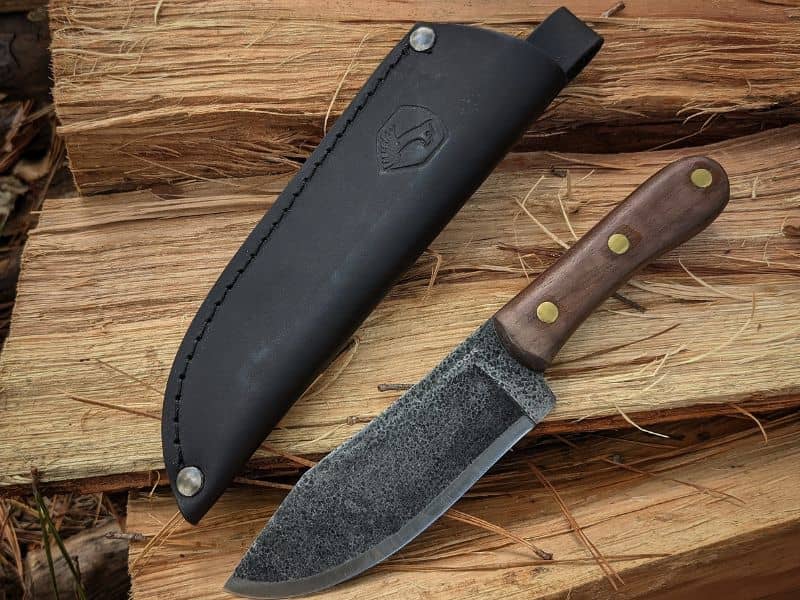
Condor Hudson Bay Mini: First Impressions
The Condor Mini Hudson Bay is a handsome knife, and if you’ve ever held the original Hudson Bay, then the similarities will be immediately apparent. The walnut handle and broad drop-point blade with its hammered finish are quite similar, albeit on a smaller scale.
It has a certain pioneer quality to it—something you could easily imagine a 19th century mountain man pulling out of his belt. I wasn’t always a fan of knives that looked this ‘woodsy,’ but I’ve come to appreciate them a lot more over the years as I’ve gotten more and more into bushcraft.
The Hudson Bay and the Mini Hudson Bay both offer a great balance of form and function. One could argue that, if you already own the Hudson Bay, then there’s no real use for the Mini. I get that, but the original is really a lot of knife for the average person to carry around. The Mini is a more manageable size that’s also much lighter.
Measurements and Specs
The Condor Mini Hudson Bay knife has a 4.9” fixed blade, with an 8.9” overall length. For comparison, the full-sized Hudson Bay has an 8.4” blade, and measures a whopping 13.4” from end to end. Compared to the original’s 20.5 oz. bulk, the Mini weights a much lighter (but not insubstantial) 9.5 oz.
The walnut wood handle is held to the blade’s full tang with three brass pins. The blade is made of 1075 high carbon steel, and has the Condor Classic finish, which the folks at condor describe as being created using “hand powered equipment” to give the appearance of a hand-forged blade.
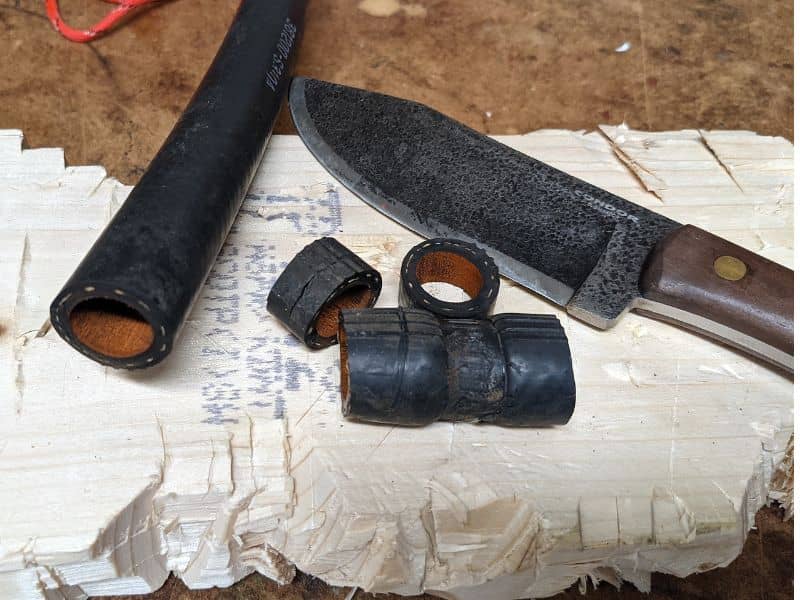
Blade Size & Shape
The blade of the Condor Mini Hudson Bay is broad, thick, and very strong. I tried to bend the blade of my Mini in an oak slab, and the wood tore long before the blade showed any sign of play. It’s seriously tough, which is a significant advantage in a camp knife that you need to use for heavy-duty bushcraft.
The thickness of the blade has its pros and cons. It makes this knife virtually unbreakable, but it also makes it heavy and not terribly graceful, especially for finer tasks. The Hudson Bay knife is a stout 0.2” thick at the spine, which is actually the same thickness as the full-sized Hudson Bay, despite their vast differences in all other dimensions.
The shape of the blade is unique. Officially it’s considered a drop-point blade, but I’ve also heard this style referred to as a reverse tanto blade. It almost looks like a clip-point blade, except that the ‘clip’ is straight instead of concave.
The blade has ample belly to it, which makes it an effective slicer. Hunters will find it good for skinning, boning and breaking down game. The overall stoutness of the blade also makes the Mini Hudson Bay good for chopping and batoning wood. The spine is angled to 90 degrees, and it creates a good spark when struck with a ferro rod.
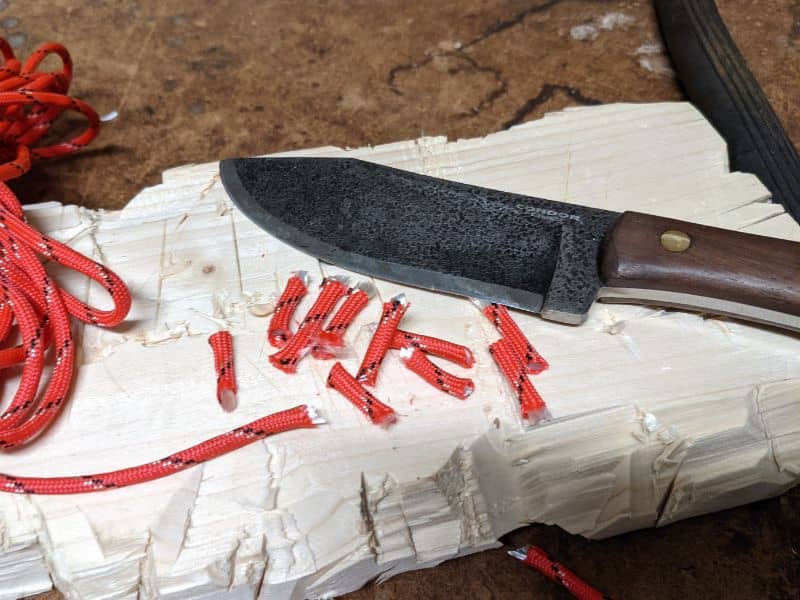
Blade Steel & Grind
The blade of the Mini Hudson Bay is made of 1075 steel, an affordable type of high carbon steel that is very common in mid-range knives. It’s not what you would call ‘high-end’ steel, but it’s a solid, dependable grade of steel that I would argue is very well suited to a rugged bushcraft knife.
1075 steel is most commonly compared to 1095 steel, which is a steel that Condor also uses in a lot of their knives, and which some knife connoisseurs would call a better steel, mostly due to its higher carbon content. 1075 steel has roughly 0.75% carbon, while 1095 steel has about 0.95% carbon.
Honestly, there are trade-offs for every kind of steel. 1075 steel is ever-so-slightly softer than 1095 steel. As a result, it might need touching up a little more often, but it’s also easier to sharpen. It’s good steel for a working knife, and the difference between 1075 and 1095 are so subtle as to be nearly unnoticeable..
Speaking of sharpening, my Mini Hudson Bay came pretty sharp right out of the box—not shaving-sharp, but not bad—and was easily honed to an even finer edge using a whetstone. At a glance, the Mini looks to have a Scandi grind, but it’s actually a full flat grind with a second bevel. To my eye, it looks just a little bit convex.
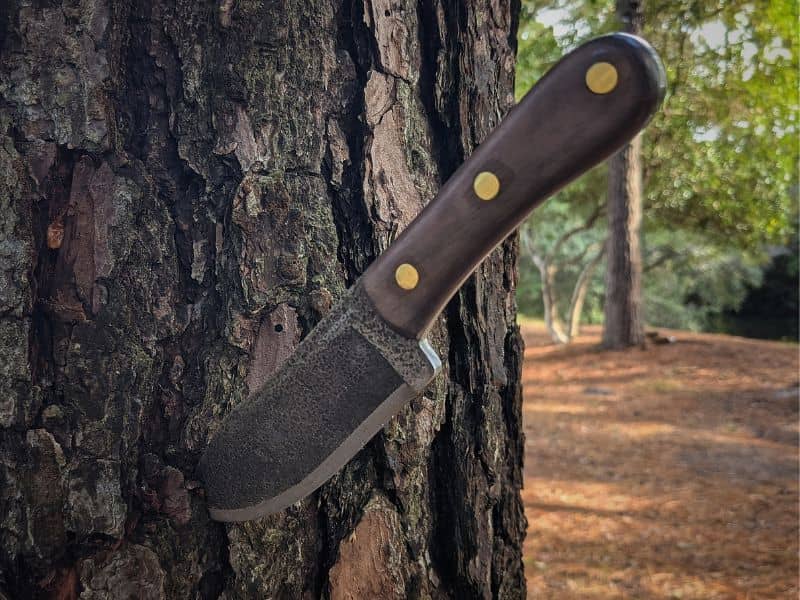
Handle
The Condor Mini Hudson Bay knife has a beautiful walnut handle, which is a big part of what gives this knife its outdoorsy, throwback look. The handle is smooth and well-contoured for a comfortable grip. Being made of wood, it doesn’t have any added texture, but I find that it stays in my hand nicely, and I haven’t experienced any issues with slipping.
The handle is a little bit shorter than most of the knives I’m accustomed to. I’ve heard some users say that they don’t care for the shortness of the handle, which is understandable if you have large hands, but I personally find that it’s very comfortable after getting used to it. There’s no lanyard hole, nor is there really any need for one.
The brass pins that hold the handle together are smooth and flush with the surface. The curve of the handle is perfectly contoured with the tang, and both are very smooth. I’ve used this knife a lot in recent weeks, and haven’t found any hot spots.
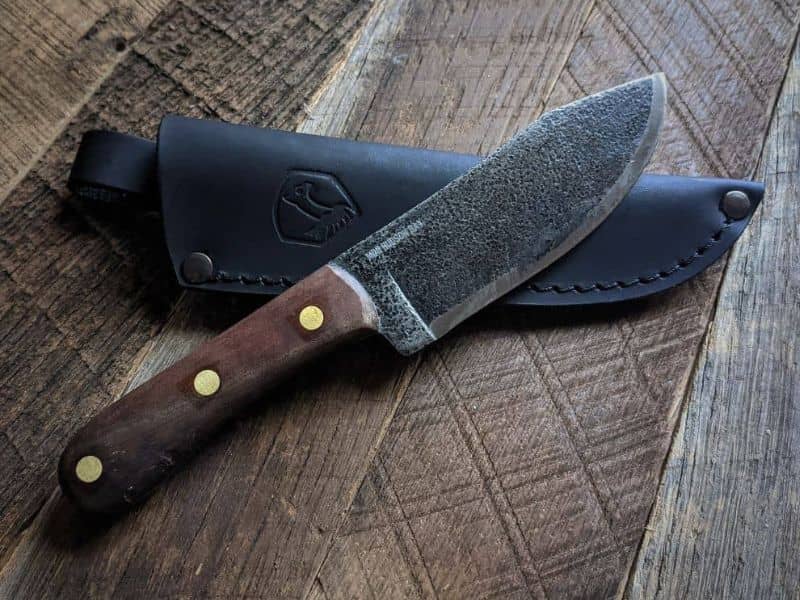
Sheath
The sheath that comes with the Mini Hudson Bay is a variation on Condor’s classic leather sheaths, which come with most of their bushcraft and outdoor knives. It’s made of thick, heavy duty leather that has a handsome, dark chocolate-like color. Two metal pins and a line of durable stitching hold the sheath together.
There’s no drain hole at the bottom of the sheath, so take care to make sure your knife is clean and dry when you put it away (of course, that’s something you should be doing anyway). The knife rests snugly, deep inside the sheath. It’s easy to pull out while still being very secure.
Final Thoughts on the Hudson Bay Mini
If you’re on the hunt for a compact, reliable camp knife, the Condor Mini Hudson Bay is a great option. It has a traditional look and finish, and is designed with functionality in mind. It’s small enough that you can carry it much more comfortably than a full-sized Hudson Bay knife, but still hefty enough to use and abuse without worry.
This is a solid hunting knife that’s equally useful for camp cooking and bushcraft. You can use it to skin and prep game, and to slice up meat and veggies for your dinner. You can shave tinder and split wood for your fire, and strike sparks off the spine with a ferro rod.
The thickness of the blade and the relative stoutness of the handle are two design features that take getting used to, but neither are major features that detract from the Hudson Bay Mini. It’s easy to sharpen, and nearly impossible to break.
I wouldn’t judge any knife on looks alone, so I consider it a bonus that the Condor Mini Hudson Bay is also a great-looking knife. With its hammered finish, broad blade and natural wood handle, this knife looks right at home in the outdoors. One could easily imagine it belonging in another era of history altogether, but the modern craftsmanship that went into its design is also quite apparent.

Blair Witkowski is an avid watch nut, loves pocket knives and flashlights, and when he is not trying to be a good dad to his nine kids, you will find him running or posting pics on Instagram. Besides writing articles for Tech Writer EDC he is also the founder of Lowcountry Style & Living. In addition to writing, he is focused on improving his client’s websites for his other passion, Search Engine Optimization. His wife Jennifer and he live in coastal South Carolina.

